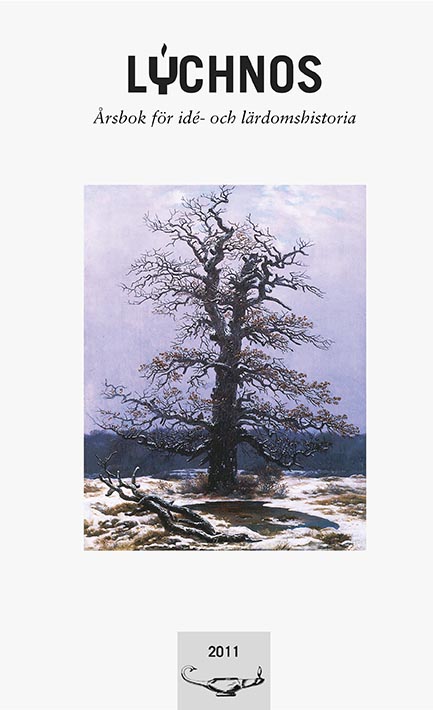Das Romantikerhaus
Idealism och romantik i 1790-talets Jena
Abstract
Das Romantikerhaus is today a brilliant little museum in Jena. Once it was the home of Johann Gottieb Fichte and the place where he held most of his extremely well-attended lectures. It was the heyday of the local university, which for some time became the most attractive institution for higher education in any German state. For a short period it became the center of both Kantian idealism and early German Romanticism. In this article, the complicated relations between these two currents are highlighted. Previously, romantics like Friedrich Schlegel and Novalis have normally been seen as followers of Fichte and, especially, of Schelling. Recent research, however, has demonstrated that there were substantial differences. Novalis says, in a fragment, that we look everywhere for the absolute (das Unbedingte) but we can only find things (Dinge). This was a position far from Fichte’s pure I that was presented just as “das Unbedingte”. Schlegel on the other hand stressed the importance of Fichte’s philosophy but distanced himself from it by seeking the starting-point for his thinking in the Being in i all its undifferentiated breadth.
In this way, Schlegel was also far from the young Schelling’s position which in fact was a whole series of efforts to find the stable ground for a union of nature and consciousness. In fact, for a short period Schelling could be seen as a member of the Jena circle. For both intellectual and emotional reasons, however, the circle split up, and many of the former friends became bitter enemies.
Downloads
Publicerad
Nummer
Sektion
Licens
This work is licensed under a Creative Commons Attribution 4.0 International License. The copyright for the work published in Lychnos remains with the authors.


